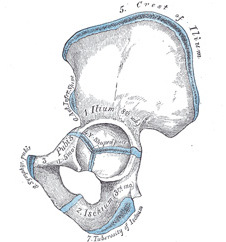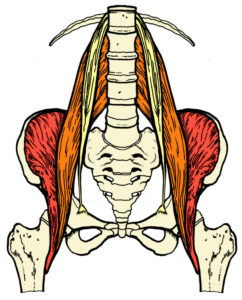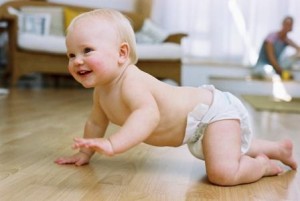Walking Lessons For Babies- The Psoas Major in Infancy
Let’s talk about babies.
It is so easy to see the little blobs that lay before us just that.
Cute little blobs to be cooed at and passed around for others to coo at.
But physical development in the first year before we begin walking profoundly affects our posture for the rest of our life.
The journey that we all take to become standing individuals imprints many patterns that can easily follow us through life.
If we don’t think at some point of changing these patterns there is no reason why they wouldn’t be ours forever.
If you can buy into that idea let’s look at the process of early development. And the awakening of one of the body’s most important muscles, the psoas major.
The psoas major is the body’s main hip flexor and it is responsible for initiating the movements of walking.
This muscles development is based in large part on early physical maturation.
In a baby’s first six months the psoas lies dormant because the legs are not called upon to bear weight.
It is actually important that the legs don’t bear weight at this time.
Among the many fascinating details of birth is that when we are born we are far from whole.
This is because many of our bones are very soft and some remain that way for some time.
Your skull is actually a series of bones that overlap as you squeeze through the birth canal.
Over the first ten days of a baby’s life, you can feel the ridges of these overlapping plates before they slip into their correct place.
Another trick of our anatomy happens within the pelvis.
The pelvis is made up of three bones- the two hip bones and the sacrum.
In utero and for about anywhere from nine months to a year after birth, the two hip bones are each made up of three separate bones (Ilium, Ischium & Pubis).
It’s Hip To Be Cool
 Over the course of the first year, these three bones fuse into one hip.
Over the course of the first year, these three bones fuse into one hip.
I bring this up to talk about a very important aspect of baby handling.
Any time you walk into a restaurant it is likely that you will see parents and children.
And very often you see very young babies being stood up on their feet and held aloft by their hands.
I’m not one to proselytize in restaurants but the friends that I have remarked to about this discreetly always say how much it seems that their babies love the feeling.
It is hard to argue against the look of glee that is on their faces. It must be an amazing feeling to be up at your mommy and daddy’s eye level and upright.
It takes about 10 months for the hip bone to fuse. Ten months of sitting, crawling and exploring.
Imagine if you never stood your child up until he or she could stand on their own.
After that 10 months, a child will pull himself or herself up to stand for the first time on a solid hip and confident footing.
This is all a key part of natural psoas development.
On a similar note, babies should never be sat up by a parent.
Newborns should spend as much time on their bellies as possible when not being held.
And babies should be allowed to find their movement markers on their own.
The act of sitting up is one of life’s first and most primal achievements.
How great would it be if a child could find its way there on its own?
There is a real emotional component to this process.
Let’s say a baby who has never been sat up finally – at around six months- makes its way to sit on its own.
It’s All About The Psoas
 It knows how it got there and in turn knows how to move back to square one.
It knows how it got there and in turn knows how to move back to square one.
The inverse is that the sat-up baby has little control over its fate.
Additionally, babies who are propped into sitting positions can develop a habit of scooting along on their butt rather than crawling.
There is a similar emotional connection to babies on their bellies as opposed to babies on their backs.
A baby on its belly is a grounded object. It might not be able to crawl yet but it can touch fingers and toes to the floor and have a grounded sense of a protected umbilicus.
Babies on their backs are kind of lost in space unable to do anything but flail their hands and feet to no avail.
Babies are happy on their backs as they have a great view of things from that perspective. But tummy time is essential to their physical development.
Now, these are all pet peeves of mine but they are very connected to the intrinsic development of the psoas.
Like I said earlier the psoas lies dormant in infancy and awakens in the baby’s first movement from hands and knees to sitting.
For many babies sitting up and beginning to crawl often coincide. And crawling, before standing and walking, is the next key phase in psoas development.
With crawling comes lengthening and toning that prepares the psoas muscle to help the bone bear weight as the young skeleton makes its first forays into the world of standing and walking.
Creeping around the furniture can take a good while before the baby’s true first steps.
And at that moment, truly one of life’s grandest, we first stand on our own and witness the true awakening of our most important muscle, the psoas.
In many ways, it will never relax again.

